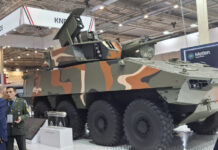Start < Page 1 of 7 >
Much has been written about the difficulties and challenges of urban warfare, especially combat methods used in security and stabilization operations (SASO), where high sensitivity to collateral damage and concerns for the welfare of non combatants require limited use of force and tight control at all combat levels.
In past conflicts, offensive military operations have usually been conducted in urban environments only when unavoidable. Leaders of armies preferred to bypass areas posing significant threats or obstacles to their forces. In most cases, military action in urban areas would only occur when military units were forced to pass through villages or urban terrain due to the co-location of river crossings, strategic junctions, etc., with these population centers.
In the post cold-war era, however, conflicts are shifting from the wastelands, deserts, and jungles into the cities, where terrorists, insurgents, or guerillas (1) find safe havens in environments that also provide a rich target environment.
Characteristics of urban warfare
For regular armies, operations in urban terrain pose significant challenges. Compared to rural areas, or open desert, maneuverability in a city is restricted to fixed routes, which are frequently dominated by elevated firing positions (such as rooftops, towers, etc). These restricted movement axes limit maneuverability and require deployment of forces into long columns, reducing their ability to employ concentrated firepower and provide mutual support. Since the routes are predictable, enemy ambushes can be pre-planned or executed spontaneously as the battle progresses.
Improvised Explosive Devices (IEDs) can be pre-positioned, some buried under the pavement, some blended into walls and covered with mortar and paint. These devices make passing targets, such as foot patrols or inadequately protected vehicles, highly vulnerable.
IEDs and mines are only two of the threats that military units can encounter in urban settings. Other popular attack methods include car-bombs, suicide bombers, weapons fired from passing cars, sniper fire, mortar and rocket attacks, and even direct assaults on vulnerable elements. Locations of these ambushes can be selected based on availability of observation points, ingress routes and especially escape routes that allow urban guerillas to blend into the local population immediately following an attack.
Subterranean networks, such as sewer or cistern systems, or purpose built tunnels, offer covert movement to local elements familiar with the terrain and add to the guerilla’s mobility. Attacks in urban environments are often carefully planned, but their purpose is not always to kill people. Sometimes attacks are performed as deceptions, or as part of “battlefield shaping” by the attackers.
1 regardless of their cause or justification for the fight, the enemy will be collectively addressed here as “urban guerillas”
Additional parts of this article:
- The Challenges of Command and Control in Urban Operations
- The urban electromagnetic environment
- Information Warfare in urban Combat
- Effects Based Operations (EBO) in urban Combat
- Situational Assessment (SA) in urban Combat
- Backing the Vigilant Eyes ISR Networking for Urban Combat
- Accelerating the kill chain Closing the Sensor-to-shooter Cycle



















